 Export Model - Exporting a STEP model
Export Model - Exporting a STEP model
Also see :
- Exporting from your current Job (index)
- Transmittal of "Model Formats" such as STEP ( Home > Transmittal )
- Part Library Manager (can import STEP files)
- Import Model (can import STEP files)
- Model > Reference Models (can import STEP files)
page 1 | contents | export model | top
 Step-by-step instructions for exporting a STEP model :
Step-by-step instructions for exporting a STEP model :
|
|
|
Select Items bindings (optional in step 1e) |
1a : Confirm that your current Job contains the members and materials or other information that you want to export.
1b : The entire 3D model should have undergone Process and Create Solids , have been thoroughly reviewed , and should have been modified to be current.
1c (optional) : If you are in Modeling , Status Display can be used to mask members that you do not wish to export. For example, you may want to mask " Existing members " or particular " Zones " or " Sequences ."
1d (optional) : You may also want to set up an appropriate output configuration for User and Site Options > Output > " Export Model ." Output should be set to a specific file folder (directory).
1e ( optional ): In Modeling , you can Select+ the members that you want to output to the STEP file. If you do not select members at this time, you will be prompted to select members in step 2 .
2 . Open the Export Model window using one (1) of the following methods. If you did step 1e , you are in Modeling , and you must use method 2, 3, 4 or 5 to open Export Model .
Method 1 : Home > Export > 3D > Export Model .
Methods 2, 3, 4 & 5 : In Modeling (classic), choose Interface > Export Model , or click the icon pictured above , or use a keyboard shortcut . If you have added Export Model to the context menu , you can right-click and choose Export Model on the context menu. Note : You can also use methods 2, 3 & 4 in the Drawing Editor , but the resulting export will include all members in the model.
After method 2, 3, 4 or 5 in Modeling , if you did not do step 1e, Select Item(s) mouse bindings become available, and you are prompted to select members. Press Enter when you are done selecting.


bindings in Modeling if you didn't do step 1e If you decline to select members -- for example, by pressing Enter or Esc without selecting members -- you end this operation.
3 . On the Export Model window, do the following:
3a : Select ' STEP ' as the " Export file format ."
3b : Confirm that the " Destination " is where you want the file to be sent. ' Directory ' outputs the file to a folder. By default Export Model names the STEP file after your current Job and add a .stp extension.
3c ( optional ): If you want to change the output destination, press the " Change... " button and make appropriate selections on the Output Configuration Setup window.
4 . While still on the Export Model window, press the " Properties " button next to " Export file format " to open the STEP Properties window. On that window are the following options. Be aware that checking the boxes for " Export welds " " Export holes " and/or " Export bolts " causes the output file to grow larger and more complex.
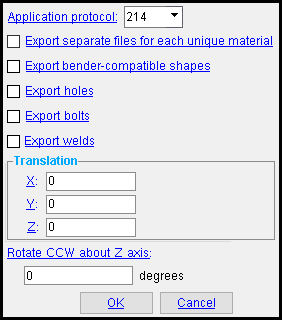 |
The STEP Properties window. |
Application protocol: 203 or 214 or 242 . Selecting ' 203 ' outputs a file that conforms to AP203, which is the more basic protocol. ' 214 ' conforms to AP214, which includes most everything in AP203 but adds colors. 242 combines the capabilities of AP203 and AP214. Most software that can import STEP models can accept any of these formats. AP242 is the most recently developed protocol, and it may be required by newer software. You may or may not see visual differences in models imported using different protocols.
Export separate files for each unique material:
or
. If this box is checked (
), individual part files will be exported and named with their material piecemark. The 'Output file name' field, on the Export Model window, will be used to generate the folder name into which these files will be put. If this box is not checked (
), a single ".stp" file will be created when performing a STEP export.
Export bender-compatible shapes:
or
. This option was implemented to provide modeling information to tube benders. It is currently under development, but may be able to give a bending machine the information it needs to produce accurate bending results. For purposes other than providing information to bending machines that read STEP files, you should keep this option not checked. If this box is checked (
), Export Model attempts to export members as profiles with extruded shapes. If the box is not checked (
), the STEP export accurately renders curved shapes is a fashion that is similar to the way that they are rendered in the SDS2 model.
Export holes:
or
. If this box is checked (
), holes are output to the STEP file. If the box is not checked (
), holes will not be output to the file.
Export bolts:
or
. If this box is checked (
), bolts are output to the STEP file that will be generated when you press " OK " on the Export Model window. If the box is not checked (
), bolts will not be output to the file.
Export welds:
or
. If this box is checked (
), welds are output to the STEP file. If this option is not checked (
), welds will not be output to the file.
Translation: 0 or a +/- distance in the primary dimension " Units " or other units . The work points of all members in your current Job have specific left- and right-end global X, Y and Z locations within the 3D model. .If, in the exported file, you want the global X and/or Y and/or Z coordinates for both ends of every member to be altered a specific distance, enter that distance here.
' 0 ' for " X " and " Y " and " Z " exports a model with the same origin ( 0, 0, 0 global coordinate ) as the model in your current Job.
A positive distance is added to the left- and right-end X, Y or Z coordinates of all exported members.
A negative distance is subtracted from the left- and right-end X, Y or Z coordinates of all exported members.
Rotate CCW (counterclockwise) around Z axis: A positive or negative (-) number of degrees. Rotation is around the Z global axis . A value of 0 designates no rotation of the STEP model. A positive number rotates the STEP model counterclockwise that number of degrees. A negative number rotates the STEP model clockwise that number of degrees.
| Plan view counterclockwise rotations around the Z axis | |||
0°
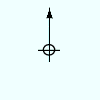
|
90°
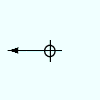
|
-90°
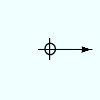
|
180°
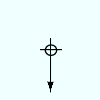
|
Alternative 1 : Press " OK " at the bottom of the STEP Properties window to apply changes made to settings on the window to the output of the STEP file.
Alternative 2 : Press the " Cancel " button if you want to apply only those settings that were active on this window when you first opened it. Settings changed since the window was opened will be forgotten and will not be applied.
5 . The Export Model window is again active.
5a (optional) : If you want to, you can type in a different " Output file name ."
5b : Press the " OK " button.
6 . A STEP file is written to the " Destination " set in step 3 . A Warnings window may open. The window lists any members or materials that could not be exported. Press the " OK " button at the bottom of the Warnings window. If you used the default " Output file name ," the STEP file is named after your current Job and given a .stp extension.
Possibility 1 : If you did this export from Home or in the Drawing Editor , the members that you selected in step 5 will be exported to the STEP file.
Possibility 2 : If you are in Modeling , the members that you selected in step 1e or step 2 will be exported to the STEP file.
page 1 | contents | export model | top







